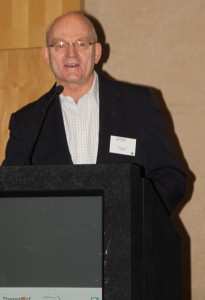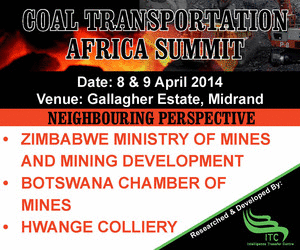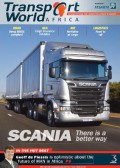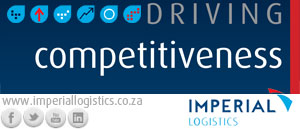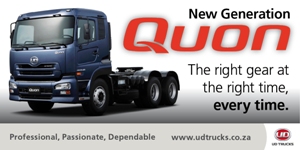Presentations
Click here for presentations given at Truckers’ Forum 2012
Videos
Click here to few various videos from Truckers’ Forum 2012
Without a doubt, the Truckers’ Forum 2012, the first-of-its-kind workshop held to tackle problem issues along East and Southern Africa’s transport corridors and to find solutions, was a great success. But it’s not over yet!
The forum was not a conference, where delegates listen to presentations and then go home having not achieved much. Instead, the Trucker’s Forum was a practical workshop devised to initiate active delegate participation with the objective of identifying workable and reasonable solutions to problematic interregional transport issues.
Barney Curtis, executive director of the Federation of East and Southern African Road Transport Associations (FESARTA), took pains to point out that the Trucker’s Forum, which is to be an annual event, is an interregional forum comprising East and Southern Africa. He welcomed the attending representatives of South Africa’s Department of Transport, as the host nation, as well as the Common Market of Eastern and Southern Africa (COMESA), the East African Community (EAC), the Southern African Development Community (SADC), TradeMark East Africa (TMEA) and TradeMark Southern Africa (TMSA), the implementing agents for the Sub-Saharan Africa Transport Programme, the Southern African Trade Hub, USAID Southern Africa and its East African counterpart, Compete. In 2013 the forum will be held in Nairobi, Kenya.
Curtis stressed that the outcomes document of the forum will be presented, as an official document, to the COMESA/EAC/SADC Tripartite alliance, as an input to its Trade and Transport Facilitation Programme. FESARTA will then liaise closely with the tripartite alliance to track the implementation thereof. Of course, implementation must take place at national level in each country; it cannot be done regionally. To this end, the National Road Transport Associations (NRTAs) of each country will work closely with FESARTA to follow through on implementation.
As Curtis pointed out: “This is the first Trucker’s Forum and just the start of a process to improve the flow of goods along our road transport corridors, which is crucial to seamless, efficient interregional trade, the economic upliftment of East and Southern Africa, and the eradication of poverty.”
“It is not just an event,” he said.
Photo gallery: Truckers’ Forum 2012
Efficient movement of goods crucial to intraregional trade
Cyril Laubscher, Director of Business Development at Imperial Logistics, which was the headline sponsor, said that Africa’s opportunities must not be underestimated. However, Africa needs to become internationally competitive. Focus must be placed on infrastructure investments, particularly in ports, roads and rail services. What is also critical is the development of integrated regional communities – and the integrated, implementable plans to make this a reality. Interregional trade and cross-border corridor development requires the combined commitment of all the East and Southern African governments and their working together to achieve these goals, which will reduce the cost of logistics, ensure the efficient movement of goods and create a balanced, bi-directional flow of goods to and from Africa.
The South African Department of Transport (DOT) acknowledged that an efficient cross-border road freight transportation system is crucial to interregional trade. To this end, the DOT committed to provide adequate infrastructure to ensure such a system. This was one of the main points to come out of the Minister of Transport Sibusiso Ndebele’s keynote address that was delivered on his behalf at Truckers’ Forum 2012 by Sinethemba Mngqibisa, chief director of the DOT. Speaking at the forum on Wednesday, 14 March 2012, Mngqibisa stated that: “In the European Union, interregional trade accounts for almost 80% of their overall trade and most of this trade is truck borne. In Africa, interregional trade accounts for a mere 12%. So, for us to unlock the economic value of interregional trade we need to ask ourselves what is preventing Africa from trading with itself?”
Working to reduce bureaucracy
Lolette van Niekerk of TMSA and Silas Kanamugire of TMEA explained that TMSA and TMEA are not-for-profit organisations that seek to support East and Southern Africa’s integration, thereby unlocking its economic potential through:
• a reduction in transport time and related costs along the key corridors in East and Southern Africa
• supporting EAC and SADC institutions to develop a comprehensive framework for regional integration
• supporting partner states to substantially increase the implementation of a comprehensive framework for regional integration
• engaging private sector and civil society to positively influence regional integration policies and practices for growth in trade.
As Van Niekerk pointed out, a one-day increase in inland transit times reduces exports by 7% on average. And, for landlocked countries, a 1% increase in export time delays reduces exports by 1%. At the moment, it takes an average of 15 days to travel by road from Kolwezi in the Democratic Republic of the Congo (DRC) to the Port of Durban in South Africa. Of this time, seven days (47%) is spent getting through three border posts. At most this should be hours, not days. Kanamugire, on the other hand, highlighted the critical need to reduce East Africa’s costs of importing and exporting a shipping container, which at the moment is three times more expensive than South Africa.
Tripartite member states
Angola, Burundi, Botswana, Comoros, Djibouti, DRC, Egypt, Eretria, Ethiopia, Lesotho, Libya, Kenya, Madagascar, Malawi, Mauritius, Mozambique, Namibia, Rwanda, Seychelles, South Africa, Sudan, Swaziland, Tanzania, Uganda, Zambia and Zimbabwe
Getting rid of non-tariff barriers
Non-tariff barriers (NTBs) do not stop trade but do make it difficult for traders. NTBs raise costs to a point of inefficiency so that trade, in many instances, is simply not worthwhile. In a trading environment where NTBs prevail, economic development is stifled. This is one of Africa’s major problems.
Vonesai Hove of TMSA, which is responsible for the non-tariff barrier (NTB) monitoring system, reminded the forum that the Heads of State Decision in Kampala 2008, to establish a Tripartite Free Trade Agreement, included all the member states of COMESA, EAC and SADC, which are the three Regional Economic Communities (RECs) bound by the agreement. This was ratified by an MOU framework signed by the REC CEOs in January 2011. According to this agreement and MOU framework, the tripartite alliance agreed to eliminate non-tariff barriers and refrain from introducing new ones by invoking REC treaty/protocol provisions for eliminating non-tariff barriers to trade.
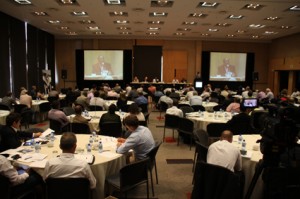 Problems and solutions
Problems and solutions
Over the four months prior to the Trucker’s Forum, a working committee, through a process between FESARTA and its member NRTAs, identified a number of key problems and possible solutions. These were then sent to each delegate to assist them in their preparation for the Trucker’s Forum workshops. A document listing NTBs directly affecting the road transport industry was compiled from the NTB monitoring system and given to delegates. Curtis stressed that what was discussed and agreed in the forum workshops would be vitally important to the East and Southern Africa region and the transport industry. Greg Faasen facilitated the proceedings, which produced the following outputs:
Session 1: Border procedures, documentation, smuggling and infrastructure
Session 2: Load limits and overloading control
Session 3: Excessive and arbitrary charges, levies and taxes
Session 4: unacceptable level of road safety
Session 5: Low level of adherence to regulations and poor relationship with authorities






